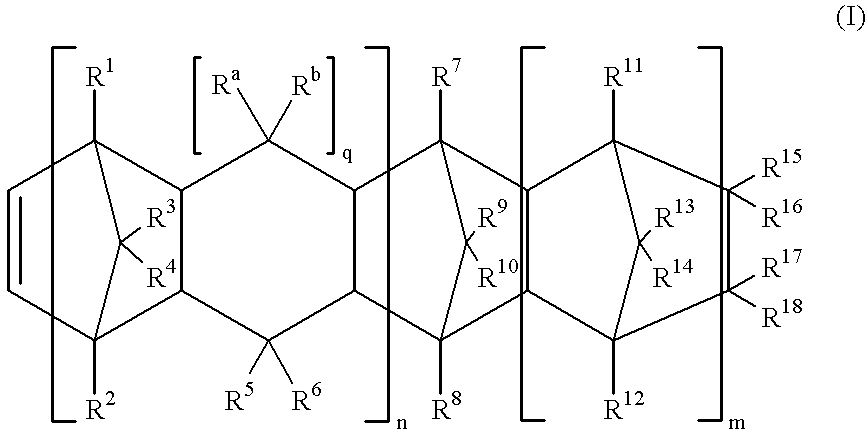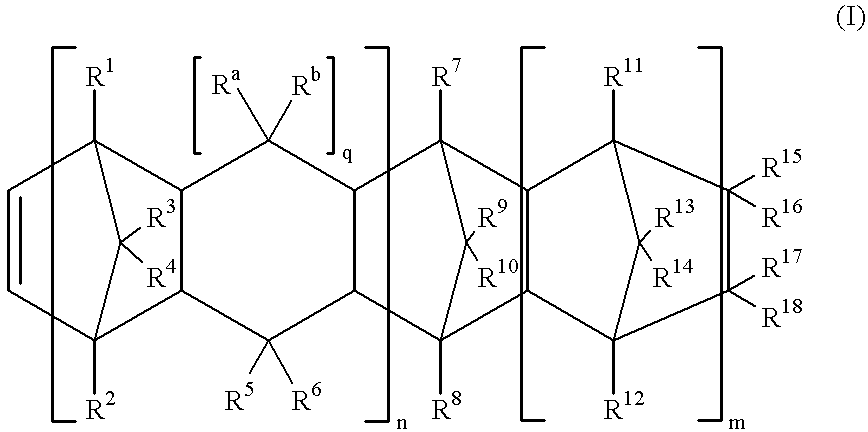Cycloolefin resin pellets and a process for producing a molded product thereof
a technology of cycloolefin resin and molded products, which is applied in the direction of organic chemistry, soles, and group 5/15 element organic compounds, can solve the problems of reducing transparency, and achieve the effect of excellent transparency and reduced impurities such as gelatinous contaminants
- Summary
- Abstract
- Description
- Claims
- Application Information
AI Technical Summary
Benefits of technology
Problems solved by technology
Method used
Image
Examples
example 1
To 100 parts by weight of cycloolefin random copolymer pellets (TMA: 88.degree. C., Intrinsic viscosity [.eta.]: 0.68 dl / g, Tg: 70.degree. C. of ethylene and tetracyclo[4,4,0,1.sup.2.5,1.sup.7.10 ]-3-dodecene (TCD-3) preliminarily blended with 0.1 part by weight of tetrakis[methylene-3(3,5-di-tert-butyl-4-hydroxyphenyl)propionate]methane (trade name: Irganox 1010, produced by Nippon Ciba Geigy, Co.) and 0.03 part by weight of calcium stearate as stabilizers, 0.1 part by weight of tetrakis[methylene-3(3,5-di-tert-butyl-4-hydroxyphenyl)propionate]methane (melting point: 118.degree. C.) as a powdery coating material was added and mixed by means of a tumbler, to thereby adhere the coating material onto the surface of the cycloolefin random copolymer pellets.
Then, the resultant pellets were fed to an extruder having a diameter of 30 mm kept at 240.degree. C. to obtain a sheet having a thickness of 0.25 mm by a T-die film molding method.
The light transmittance and haze of the film were de...
example 2
The same procedure as in Example 1 was repeated except that 0.1 part by weight of a powdery 3,5-di-tert-butyl-4-hydroxytoluene (melting point: 72.degree. C.) was used as a coating material instead of 0.1 part by weight of the tetrakis[methylene-3(3,5-di-tert-butyl-4-hydroxyphenyl)propionate]methane which was adhered onto the surface of the cycloolefin random copolymer pellets, to thereby obtain a sheet.
The light transmittance and haze of the film were determined, and the results are shown in Table 1.
example 3
The same procedure as in Example 1 was repeated except that 0.1 part by weight of a powdery calcium stearate (melting point: 152.degree. C.) was used as a coating material instead of 0.1 part by weight of the tetrakis[methylene-3(3,5-di-tert-butyl-4-hydroxyphenyl)propionate]methane which was adhered onto the surface of the cycloolefin random copolymer pellets, to thereby obtain a sheet.
The light transmittance and haze of the film were determined, and the results are shown in Table 1.
PUM
| Property | Measurement | Unit |
|---|---|---|
| Fraction | aaaaa | aaaaa |
| Fraction | aaaaa | aaaaa |
| Percent by mass | aaaaa | aaaaa |
Abstract
Description
Claims
Application Information
 Login to View More
Login to View More - R&D
- Intellectual Property
- Life Sciences
- Materials
- Tech Scout
- Unparalleled Data Quality
- Higher Quality Content
- 60% Fewer Hallucinations
Browse by: Latest US Patents, China's latest patents, Technical Efficacy Thesaurus, Application Domain, Technology Topic, Popular Technical Reports.
© 2025 PatSnap. All rights reserved.Legal|Privacy policy|Modern Slavery Act Transparency Statement|Sitemap|About US| Contact US: help@patsnap.com



